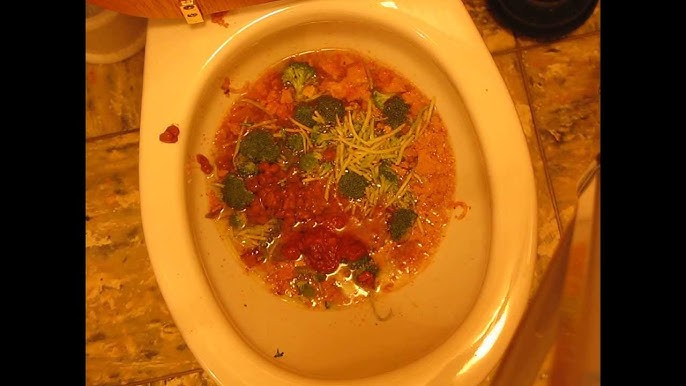The publisher is making several great points regarding Is it safe to flush food (especially rice) down the toilet? in general in the content further down.

Introduction
Lots of people are usually faced with the problem of what to do with food waste, particularly when it concerns leftovers or scraps. One common question that emerges is whether it's okay to flush food down the toilet. In this article, we'll explore the reasons individuals might think about purging food, the repercussions of doing so, and alternate methods for appropriate disposal.
Reasons that people might consider purging food
Lack of recognition
Some individuals may not know the prospective injury brought on by flushing food down the toilet. They might erroneously believe that it's a harmless method.
Comfort
Purging food down the commode might look like a quick and simple option to taking care of undesirable scraps, particularly when there's no close-by trash bin readily available.
Idleness
Sometimes, individuals may merely choose to flush food out of large negligence, without considering the effects of their actions.
Consequences of flushing food down the toilet
Ecological impact
Food waste that winds up in waterways can contribute to air pollution and harm water environments. In addition, the water utilized to flush food can strain water resources.
Pipes concerns
Purging food can bring about blocked pipelines and drains pipes, triggering expensive plumbing repair work and hassles.
Kinds of food that ought to not be purged
Fibrous foods
Foods with coarse structures such as celery or corn husks can get entangled in pipes and create clogs.
Starchy foods
Starchy foods like pasta and rice can absorb water and swell, causing obstructions in pipelines.
Oils and fats
Greasy foods like bacon or cooking oils must never ever be flushed down the bathroom as they can strengthen and create obstructions.
Correct disposal methods for food waste
Utilizing a garbage disposal
For homes equipped with garbage disposals, food scraps can be ground up and flushed with the pipes system. Nonetheless, not all foods appropriate for disposal in this fashion.
Recycling
Particular food product packaging products can be reused, lowering waste and decreasing ecological influence.
Composting
Composting is an environment-friendly method to get rid of food waste. Organic materials can be composted and made use of to enhance soil for horticulture.
The value of appropriate waste administration
Reducing ecological harm
Correct waste monitoring techniques, such as composting and recycling, help minimize contamination and preserve natural deposits for future generations.
Protecting plumbing systems
By avoiding the technique of flushing food down the commode, house owners can prevent expensive plumbing repair services and keep the honesty of their pipes systems.
Verdict
Finally, while it might be appealing to flush food down the toilet for benefit, it's important to recognize the prospective repercussions of this action. By taking on appropriate waste administration practices and taking care of food waste properly, individuals can add to healthier plumbing systems and a cleaner environment for all.
FLUSH FOOD DOWN THE TOILET?
FLUSHING FOOD CAN CAUSE BLOCKED DRAINS IN YOUR HOME
All of the plumbing fixtures in your home are connected to the same sewer pipe outside of your home. This outdoor sewer pipe is responsible for transporting all the wastewater from your home to the Council sewer mains. Even small pieces of food that go down the kitchen sink can cause problems for your sewer. It should therefore be obvious that flushing larger bits of food, such as meat, risks a clog in either the toilet itself or the sewer pipes. Flushing greasy food is even more problematic because oil coagulates when it cools, coating the interior lining of your pipes.
THE TOILET IS NOT A BIN
Food isn’t the only thing that people shouldn’t be flushing down the toilet. People use the toilet to dispose of all kinds of things such as tampons, makeup wipes, dental floss, kitty litter and even underwear. Water goes to great lengths to educate residents about the high costs and stress placed on wastewater treatment systems simply from people flushing the wrong stuff down the toilet. It costs taxpayers millions of dollars each year, and homeowners thousands in blocked drain repairs.
FLUSHING FOOD IS A WASTE OF WATER
Flushing food is a waste of our most precious resource - water. In June this year Level 1 water restrictions were introduced to protect water supply from drought conditions. Much of New South Wales continues to be affected by prolonged drought with recent figures revealing up to 97 per cent of the state remains in drought. Depending on whether you have a single or dual flush toilet, every single flush uses between five and 11 litres of water. In the current climate this is a huge amount of water to be wasting on flushing food that should be placed in the bin (or better yet, the compost).
https://www.jabplumbingsolutions.com.au/blog/can-you-flush-food-down-the-toilet

Do you like reading about What Can Happen If You Flush Food Down the Toilet?? Try leaving feedback below. We would be glad to see your insights about this article. Hoping that you come back again later on. Are you aware of another person who is very much interested in the topic? Why not promote it. I appreciate reading our article about Is it safe to flush food (especially rice) down the toilet?.
Call Today